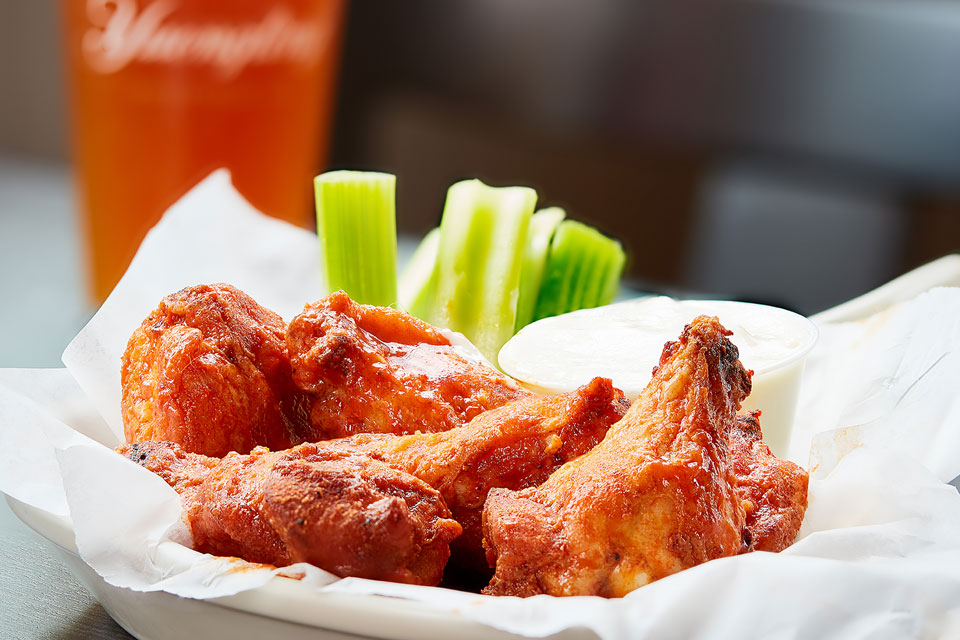Do photographers eat the food they shoot?
And other answers to your food photography questions – with an example from a Grafton, MA shoot.

Want to know what a food photography session looks like? Or maybe you’re just curious if we photographers get to eat the food we shoot. Well, look no further. Here are answers to a few common questions I’ve been asked over the years.
Is the food fake?
Wondering if we’re still hair-spraying burgers, using glue in place of milk, and soap bubbles in place of beer foam? While these are tactics photographers used to use, they’re not typical any longer.
Just as any trends change over time, food photography is no different. For instance, in the 1930s, the style of the day was to give food a very elaborate and over-the-top look. What’s more, food photographers in those days used movie lights and the food had to be made to withstand the intense heat. As a result, many of the food products were entirely fake. Fast forward a couple of decades and food photography began to take on a more realistic look. As the advertising industry emerged, photographers started shooting food from a marketing perspective. Their goal was now to make each featured product look like something you’d want to take a big hearty bite out of.
By the age of Martha Stewart, styles had changed yet again and photographers, aided by the use of modern flash, started shooting food in a more natural state, either minimizing or eliminating the use of hairspray, glue, soap bubbles, etc. The natural look became all the rage.
Do you get to eat the food?
As appetizing as the food looks in person, there is a lot of finagling that needs to be done before it can get that same look on camera. And by finagling, I mean a lot of rearranging – a lot of touching of the food. To the point where I’ll have the chef prepare two of the same exact meals: first, the dummy-food, which I will use to compose the shot and hammer down the angles and lighting. Once those test shots are perfected, I’ll ask the chef to bring out an exact duplicate of the dummy-product. That way, I can shoot the food while it’s fresh and sizzling to make sure it looks as alive and vibrant as possible.
So the short answer is, usually no, I don’t eat the food we shoot. It’s typically cold by the time we’re done and has likely been touched quite a bit – not just by myself, but often by a food stylist as well.
What’s a “food stylist” and What do they do?
The best way to make the food look its absolute best is to hire a food stylist in addition to your food photographer. These stylists have a real eye for how to make different plates of food look amazing on camera.
The only reason a client would choose not to hire a food stylist would be budgeting reasons, although I will say, a food stylist is a valuable asset to any shoot. It’s worth every penny. Even if the food looks incredible in person, only an experienced food stylist will know how to arrange it to look equally good – or better– on camera.
Do you photoshop the food?
Speaking of making the food look its absolute best, you might be wondering: do you photoshop the food in the post-production phase?
Yes, I do. Actually, photoshop is probably used more for food photography than anything else because it’s shot so up-close. This magnifies every little detail causing imperfections to become obvious.
Photoshop is not used to alter the integrity of the food product, but rather, to remove imperfections such as splatter on the plate, a bun with a tear, or any attribute of the food that could not be captured on camera.
For example, I shot a decadent-looking piece of prime rib for one of my clients in Grafton, MA the other week. When it came out of the oven, the first slice looked perfectly medium-rare. But by the time we finished shooting, the prime rib had continued to cook, so the final piece we sliced off was no longer that desirable pinkish red. This is where photoshop fits in perfectly. In post-production, the color of the meat was adjusted to match its original flavorful color and the end product looked as delicious as it did when it was first cut.
So there you have it folks! Have any more questions about food photography?
Want to learn more? Reach out anytime!
Tags: professional photographer

